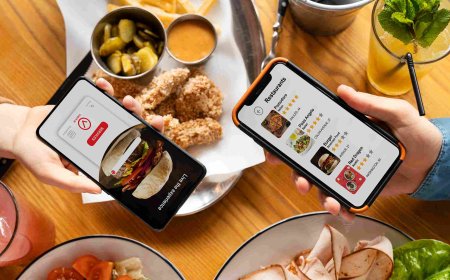How to Build a Pandemic Prep Kit
How to Build a Pandemic Prep Kit In an increasingly interconnected world, the threat of infectious disease outbreaks is no longer a distant possibility—it’s a recurring reality. From the H1N1 influenza pandemic in 2009 to the global COVID-19 crisis that reshaped daily life in 2020, pandemics have demonstrated their capacity to disrupt healthcare systems, supply chains, and social structures overni
How to Build a Pandemic Prep Kit
In an increasingly interconnected world, the threat of infectious disease outbreaks is no longer a distant possibility—it’s a recurring reality. From the H1N1 influenza pandemic in 2009 to the global COVID-19 crisis that reshaped daily life in 2020, pandemics have demonstrated their capacity to disrupt healthcare systems, supply chains, and social structures overnight. Building a pandemic prep kit is no longer a matter of paranoia; it’s a responsible, practical step toward ensuring the safety, health, and resilience of your household during public health emergencies.
A pandemic prep kit is a curated collection of essential supplies designed to sustain your household for at least two weeks without relying on external services such as grocery deliveries, pharmacies, or public transportation. Unlike a general emergency kit meant for natural disasters, a pandemic-specific kit prioritizes hygiene, medical isolation, and prolonged self-sufficiency. This guide provides a comprehensive, step-by-step approach to assembling a robust pandemic prep kit tailored to modern household needs, backed by public health guidelines and real-world experience.
Whether you live alone, with a partner, or in a multi-generational household, this guide ensures you’re prepared—not just with supplies, but with knowledge, strategy, and confidence. By the end of this tutorial, you’ll understand exactly what to include, how to organize it, where to source it, and how to maintain it over time.
Step-by-Step Guide
Step 1: Assess Your Household’s Needs
Before purchasing anything, take inventory of your household. Consider the number of people, their ages, medical conditions, dietary restrictions, and mobility needs. A household with infants, elderly individuals, or those with chronic illnesses requires different supplies than a group of healthy adults. For example:
- Infants: Formula, diapers, wipes, baby-safe sanitizers, and pediatric fever reducers
- Elderly or immunocompromised: Extra prescription medications, oxygen supplies (if applicable), and mobility aids
- Chronic conditions: Stockpiles of insulin, inhalers, anticoagulants, or other life-sustaining drugs
- Pets: Animal food, flea/tick prevention, and pet-safe disinfectants
Create a simple spreadsheet or checklist with each family member’s name and corresponding needs. This prevents over-purchasing and ensures no critical item is overlooked. Remember: pandemic prep isn’t one-size-fits-all. Personalization is key to effectiveness.
Step 2: Stockpile Non-Perishable Food and Water
Food and water are the foundation of any prep kit. The Centers for Disease Control and Prevention (CDC) recommends storing at least one gallon of water per person per day for a minimum of two weeks. For a family of four, that’s 56 gallons. Store water in food-grade containers, preferably BPA-free, and rotate every six months to ensure freshness.
For food, focus on items that require no refrigeration, minimal preparation, and long shelf life:
- Canned beans, lentils, tuna, chicken, and vegetables
- Dried rice, pasta, quinoa, and oats
- Instant soups and broths (low-sodium options for health-conscious households)
- Protein bars, nuts, seeds, and dried fruit
- Powdered milk or plant-based milk alternatives
- Electrolyte powders and hydration tablets
- Manual can opener and reusable utensils
Include comfort foods—chocolate, tea, coffee, or favorite snacks—to support mental well-being during prolonged isolation. Avoid items requiring extensive cooking; assume electricity or gas may be interrupted. Store food in a cool, dark, dry place and label each item with its expiration date. Rotate stock quarterly to prevent waste.
Step 3: Assemble a Medical and Hygiene Supply Kit
Medical supplies are the core of pandemic preparedness. The goal is to reduce exposure to healthcare facilities and manage minor illnesses at home. Essential items include:
- Thermometers (digital, non-contact preferred)
- Over-the-counter medications: acetaminophen, ibuprofen, antihistamines, cough suppressants, and antacids
- First aid kit: bandages, gauze, adhesive tape, antiseptic wipes, tweezers, scissors
- Prescription medications: at least a 30-day supply, ideally 90 days if possible
- Hand sanitizer (at least 60% alcohol content)
- Soap (bar and liquid)
- Disinfectant wipes and sprays (EPA-registered for viruses)
- Face masks: N95, KN95, or surgical masks (minimum 20 per person)
- Gloves: nitrile or latex-free, for cleaning and handling potentially contaminated items
- Disposable trash bags with ties
- Reusable cloth masks (for non-medical settings, washable)
Store medications in a sealed, labeled container away from humidity and heat. Keep a printed list of all medications, dosages, prescribing physicians, and allergies. If you use inhalers, nebulizers, or glucose monitors, include extra batteries and cleaning supplies.
Step 4: Prepare for Isolation and Sanitation
If someone in your household becomes symptomatic, you must be ready to isolate them safely. Designate a separate room and, if possible, a dedicated bathroom. If shared facilities are unavoidable, establish a cleaning schedule and use barriers (e.g., plastic sheeting) to reduce cross-contamination.
Include these isolation-specific items:
- Disposable bed linens or waterproof mattress covers
- Separate towels and washcloths for the ill person
- Disposable plates, cups, and utensils
- Laundry bags labeled “Contaminated”
- Household bleach (5.25–8.25% sodium hypochlorite) for disinfecting surfaces
- Hydrogen peroxide (3%) for sensitive surfaces
- Thermometer and pulse oximeter (to monitor oxygen saturation levels)
- Emergency contact list with healthcare providers and local health department numbers
Wash contaminated laundry separately in hot water and dry on high heat. Avoid shaking dirty laundry to minimize airborne particles. Use gloves when handling soiled items and wash hands immediately after.
Step 5: Secure Communication and Information Tools
During a pandemic, access to reliable information is critical. Power outages, network congestion, or supply chain disruptions can limit your ability to receive updates. Prepare for communication failure with:
- A battery-powered or hand-crank radio (NOAA weather radio recommended)
- Portable power banks (charged and stored with charging cables)
- Printed copies of emergency contacts, evacuation routes, and local health advisories
- A physical map of your neighborhood with nearby hospitals and pharmacies marked
- Written instructions for using medical devices (e.g., nebulizer, oxygen concentrator)
- A notebook and pens for logging symptoms, medication times, and daily logs
Ensure your smartphone is fully charged and has offline maps and emergency apps installed. Download government health alerts and store them in airplane mode to conserve battery. Consider a satellite messenger device if you live in a remote area.
Step 6: Plan for Mental and Emotional Well-Being
Prolonged isolation can trigger anxiety, depression, and loneliness. A pandemic prep kit isn’t complete without psychological resilience tools:
- Books, puzzles, board games, and playing cards
- Art supplies: sketchbooks, colored pencils, crayons
- Journaling prompts or gratitude logs
- Headphones for private listening to music, podcasts, or guided meditations
- Yoga mats or resistance bands for in-home exercise
- Pre-downloaded movies, TV shows, or audiobooks on a tablet or laptop
Establish a daily routine: wake up at the same time, eat meals together, schedule virtual check-ins with friends or family, and incorporate physical activity. Children benefit from visual schedules and storytelling. Keep routines predictable to reduce stress.
Step 7: Organize and Store Your Kit
Organization determines usability during a crisis. Store your pandemic prep kit in a central, easily accessible location—preferably a closet or under-bed storage bin that’s dry, cool, and out of reach of children or pets. Use clear, labeled plastic bins or zippered storage bags for categories:
- Food and Water
- Medical and Hygiene
- Isolation Supplies
- Communication and Documents
- Comfort and Mental Health
Include a master checklist taped to the lid of your main container. Update it every three months. Add a flashlight with extra batteries and a whistle for signaling help if needed. Keep a printed copy of your kit inventory in a waterproof envelope stored separately in case the main kit is damaged.
Best Practices
Rotate and Refresh Supplies Quarterly
Food, water, batteries, and medications expire. Set calendar reminders for the first day of each season to inspect your kit. Replace expired items immediately. Rotate canned goods by placing newer items at the back and older ones at the front. Test batteries and charge power banks monthly. Check expiration dates on masks and sanitizers—some alcohol-based products degrade after 2–3 years.
Keep Digital and Physical Copies of Important Documents
Store digital scans of medical records, insurance cards, prescriptions, and identification in a secure cloud folder (e.g., Google Drive, iCloud). Also keep printed copies in your kit. In emergencies, digital access may be unavailable. Include a printed list of emergency contacts, including out-of-town relatives who can serve as liaisons if local networks are overwhelmed.
Practice Your Plan
Don’t just assemble the kit—test it. Conduct a 72-hour “simulation” where you rely only on your pandemic supplies. Can you prepare meals without electricity? Do you know how to use the pulse oximeter? Can your child find the water bottle in the dark? Simulations reveal gaps in your preparation and build confidence in your ability to respond.
Share Knowledge, Not Just Supplies
Help your neighbors prepare. Share your checklist. Offer to help elderly neighbors assemble their kits. Community resilience is the strongest defense against pandemic chaos. A neighborhood where everyone is prepared reduces strain on emergency services and fosters mutual support.
Stay Informed, Not Alarmed
Follow trusted sources: CDC, WHO, your local public health department. Avoid social media rumors. Subscribe to official alert systems. Understand the difference between a pandemic, epidemic, and outbreak. Knowledge reduces fear. Fear leads to panic buying; knowledge leads to preparedness.
Consider Environmental Impact
Choose reusable over disposable where possible. Use cloth masks instead of single-use ones. Store water in durable containers instead of buying bottled water daily. Recycle packaging and dispose of waste responsibly. Preparedness doesn’t mean wastefulness. Sustainable prep is responsible prep.
Tools and Resources
Recommended Products
Not all products are created equal. Here are vetted, high-quality items that meet CDC and FEMA guidelines:
- Water Storage: Reliance Products 15-Gallon Water Container (BPA-free, stackable)
- Water Purification: LifeStraw Personal Water Filter (removes 99.9999% of bacteria and parasites)
- Power: Anker PowerCore 26800mAh Power Bank (charges phones 6+ times)
- Medical Monitoring: iHealth PT3 Non-Contact Thermometer and iHealth SpO2 Pulse Oximeter
- Masks: 3M N95 Particulate Respirator (N95, 8210) or Powecom KN95 Masks (FDA-authorized)
- Disinfectants: Lysol Disinfectant Spray (EPA List N approved for SARS-CoV-2)
- Radio: Midland ER310 Emergency Weather Radio with Crank and Solar Charging
- First Aid: Adventure Medical Kits Ultralight/Watertight .7
Free Digital Tools
Take advantage of these no-cost resources:
- CDC Emergency Preparedness Checklist: cdc.gov/prepare
- Ready.gov Pandemic Guide: ready.gov/pandemics
- FEMA App: Real-time alerts, shelter locations, and safety tips
- Red Cross Emergency App: Includes first aid instructions and disaster preparedness tips
- Google Crisis Response: Maps showing nearby testing centers and pharmacies during outbreaks
- MyTherapy Medication Tracker: Android and iOS app to log pills and refills
Local Resources
Check with your city or county government for free or subsidized prep programs. Some municipalities offer:
- Free water storage containers
- Discounted medical masks for seniors
- Community distribution centers for non-perishables
- Volunteer networks for home delivery to at-risk residents
Visit your local public library—they often have printed emergency guides and host preparedness workshops.
Real Examples
Example 1: The Johnson Family (4 People, Two Children)
The Johnsons live in suburban Ohio. After experiencing a 10-day power outage during a winter storm in 2021, they decided to build a pandemic kit. They started with a $300 budget and focused on essentials:
- Stored 60 gallons of water in 5-gallon jugs and added 2 LifeStraws for backup
- Bought 30 days of canned food, rice, and protein bars from Costco in bulk
- Purchased 4 N95 masks, 20 surgical masks, and 2 thermometers
- Created a “sick room” with a separate bathroom schedule and disinfectant wipes
- Printed school schedules, medication lists, and emergency contacts
- Added coloring books, LEGO sets, and a Bluetooth speaker for music
They tested their kit during a weekend “no grocery store” challenge. The children helped rotate food. They now update their kit every March, June, September, and December.
Example 2: Maria, a Single Mother with Asthma
Maria, 38, lives in Chicago with her 8-year-old daughter. She has moderate asthma and relies on a nebulizer. Her prep kit includes:
- 90-day supply of albuterol and prednisone prescriptions (filled via mail-order pharmacy)
- Extra nebulizer machine and batteries
- Portable oxygen concentrator (rented through local medical supplier)
- Wet wipes and hand sanitizer in every room
- Pre-loaded tablet with educational apps and offline videos
- Emergency contact card with her pulmonologist’s number and nearest ER
She joined a local moms’ group that shares prep tips and organizes food swaps. Her daughter now knows how to hand her the nebulizer if she’s too weak to reach it.
Example 3: The Elderly Couple in Rural Maine
Arthur and Evelyn, both 72, live 30 miles from the nearest pharmacy. Their kit includes:
- 180-day supply of blood pressure meds, blood thinners, and insulin
- Manual blood pressure cuff and glucose monitor with extra test strips
- 50 gallons of water stored in food-grade barrels
- Hand-crank radio and flashlight
- Printed list of all medications, allergies, and doctor names
- Winter gear: thermal blankets, wool socks, extra blankets
They’ve trained their grandson to check on them weekly during emergencies. He brings extra supplies and helps them rotate stock.
FAQs
How much water should I store per person?
Store at least one gallon per person per day for drinking and sanitation. For a two-week supply, that’s 14 gallons per person. Increase this amount if you live in a hot climate, are pregnant, or have a medical condition requiring extra fluids.
Can I use cloth masks instead of N95s?
Cloth masks offer minimal protection against airborne viruses. Use N95 or KN95 masks for high-risk situations (e.g., caring for someone sick, going to a pharmacy). Cloth masks are acceptable for low-risk, non-medical settings like walking outside, but never rely on them as primary protection during a respiratory outbreak.
Do I need to store prescription medications?
Yes. Many pharmacies limit refills during emergencies. Aim for at least a 30-day supply, and request a 90-day prescription from your doctor if possible. Ask about mail-order services or pharmacy delivery options.
What if I can’t afford to buy everything at once?
Build your kit gradually. Start with water and one category per month. Buy one extra can of food each grocery trip. Add a mask when you see a sale. Even small, consistent additions add up. Preparedness is a process, not a one-time purchase.
Should I store firearms or self-defense tools?
No. Pandemic prep is about health, hygiene, and sustainability—not security through force. Firearms increase risk of accidents, escalate tensions, and are not recommended by public health agencies. Focus on community building and non-violent resilience strategies.
How do I store medications safely?
Keep them in a cool, dry place away from direct sunlight. Use airtight containers. Do not store in bathrooms due to humidity. Label all containers clearly with names, dosages, and expiration dates. Dispose of expired meds at a take-back location—never flush or throw in the trash.
What if I have a pet?
Include at least two weeks of pet food, water, litter, and medications. Keep a leash, carrier, and vaccination records in your kit. Include pet-safe disinfectants and waste bags. Pets are family—prepare for them as you would for children.
Can I use vinegar instead of bleach for disinfecting?
No. Vinegar is not effective against viruses like SARS-CoV-2. Use EPA-registered disinfectants labeled for coronavirus. Bleach (diluted 1:50 with water) is effective and inexpensive. Always follow label instructions and ventilate the area.
How often should I update my kit?
Every three months. Check expiration dates, test batteries, rotate food, and update contact lists. Seasonal changes bring new risks—summer heat, winter storms, flu season. Your kit should evolve with your life.
What if I live in an apartment?
Apartment living doesn’t prevent preparedness. Use under-bed storage, closet shelves, or a rolling bin. Store water in clean, sealed containers. If you lack space, coordinate with neighbors to share supplies. Many apartment complexes have community rooms that can serve as shared storage.
Conclusion
Building a pandemic prep kit is not an act of fear—it’s an act of foresight. In a world where global health threats are increasingly frequent and unpredictable, personal preparedness is one of the most powerful tools you possess. It gives you control when everything else feels chaotic. It protects your loved ones when systems fail. It allows you to remain calm, capable, and compassionate during times of crisis.
This guide has walked you through the essential components of a comprehensive pandemic prep kit—from water and food to medical supplies, isolation protocols, communication tools, and emotional resilience. You’ve seen real examples of families and individuals who turned preparation into peace of mind. You’ve learned best practices for maintenance and sustainability, and you now have access to trusted tools and resources.
Remember: preparedness is not about hoarding. It’s about responsibility. It’s about knowing that if the power goes out, if the stores close, if the roads are blocked—you and your family will be okay. That knowledge is priceless.
Start today. Build one section. Update it next month. Share your plan. Help a neighbor. Your actions today may not make headlines, but they will save lives tomorrow.





































